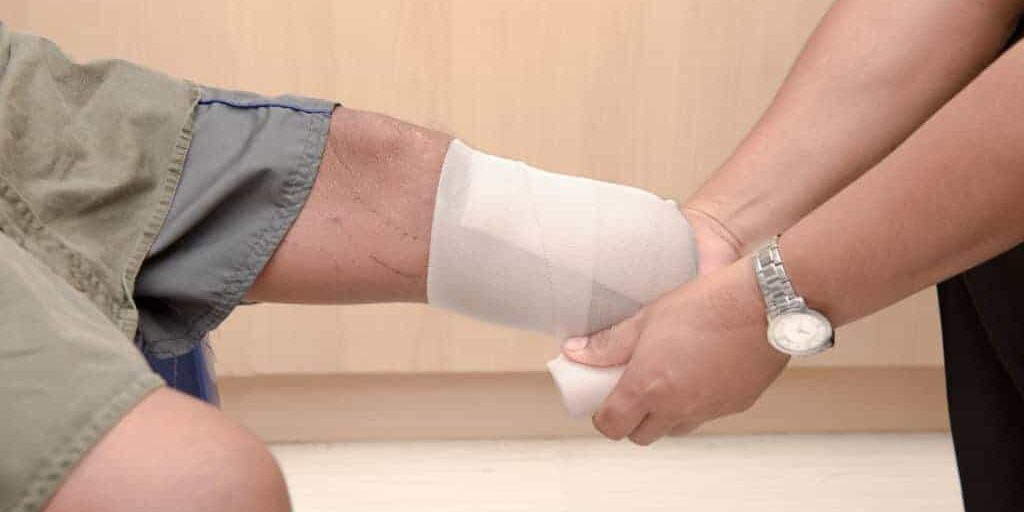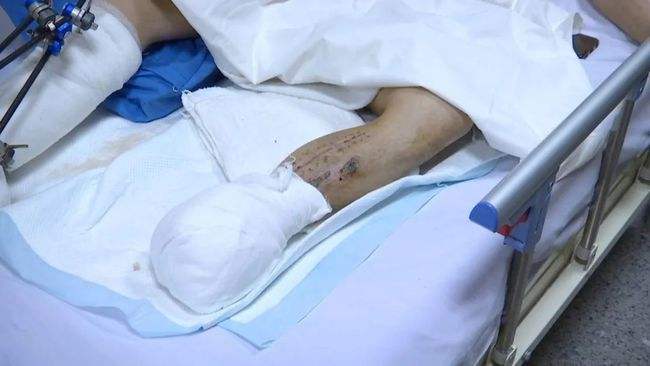News Center |

Severe lower limb trauma, especially open fracture of tibia, has always been a very difficult problem in the treatment of bone and joint trauma. Tibia is close to subcutaneously, and its anterior medial edge is not covered by muscle tissue, so its fracture is often open. The blood supply of tibia lacks collateral circulation, and the serious open fracture injury of tibia often involves important structures such as skin, muscle, bone, nerve and blood vessel at the same time, with high incidence of infection and bone nonunion. Clinicians often have to choose between amputation and limb rescue, and the indications of amputation for severe lower limb trauma remain controversial. A brief review is made based on relevant literature.
The importance of amputation in the treatment of severe lower limb trauma
Reports on amputation rates after severe lower limb trauma vary widely. For example, amputation rates for lower limb vascular injuries range from 4% to 100%. On the one hand, this is restricted by the clinical experience and technical proficiency of the treated doctors, on the other hand, it depends to a considerable extent on the severity of the primary injury. According to the degree of soft tissue injury, Gustilo and Anderson classified the open fractures of long bones into ⅰ ~ ⅲ types, in which the energy, soft tissue injury and compressing degree of fracture of type ⅰ were less, while the injury degree of type ⅲ was the most serious. Type ⅱ fracture is between type ⅰ and type ⅲ fracture, the skin wound is less than 10cm, although comminuted fracture may occur, fracture fragments are still connected by periosteum.

Gustilo et also further classified type iii fractures into three subtypes:
(1) Type ⅲ A: the fracture end has enough soft tissue coverage;
(2) Type ⅲ B: extensive soft tissue injury with periosteum stripping and bone exposure;
(3) Type ⅲ C: complicated with arterial injury requiring surgical repair.
Type ⅲ C fractures often require amputation. Caudle and Stern treated a group of 75 type ⅲ open tibia fractures, including 11 type ⅲ A fractures without amputation,42 type ⅲ B fractures with 1 early amputation, 6 delayed amputation due to infection, 22 type ⅲ C fractures with 13 early amputation,7 delayed amputation after initial treatment failure. Nonunion occurred in 2 cases without amputation, but serious complications still existed after fracture healing after treatment, and 1 case still needed late amputation.
With the advances in internal and external fixation and microsurgery-based wound repair and limb reconstruction, many severely injured limbs have been saved and preserved, but the indications of amputation for severe lower limb trauma remain controversial.
The results of over-emphasis on limb preservation are not always satisfactory for the following reasons:
(1) The injured limbs are often delayed amputation or even death due to wound infection and fracture nonunion. Bondurant et al. reported the treatment results of 263 cases of type ⅲ open fracture of tibia, and finally 43 cases of amputation were performed. Among them, the average length of hospital stay, operation times and medical costs of patients undergoing amputation 24 hours after injury were 2.4 times, 4.3 times and 1.8 times, respectively, of patients undergoing amputation within 24 hours, and 1/5 of them died of sepsis. Herve, sum up the experiences of 76 patients with severe lower limb trauma treatment, including 12 cases of traumatic amputation to reattach, 10 underwent early amputation, 54 routine physical therapy, but the latter has 20 cases finally still have to delayed amputation surgery, results of 6 cases died in 42 patients with amputation. There are 15 deaths in the rest of the 34 cases,.
(2) The ultimate goal of the treatment of severe lower limb trauma should be the preservation or reconstruction of functional limbs, but the limbs preserved after multiple surgical treatments often do not have minimal motor and/or sensory functions. (3) Blind emphasis on limb rescue may cause serious complications all over the body, even life-threatening, leading to death.
In addition, it should be noted is that although the popularity of microsurgical technique and progress has enabled many body suffered severe damage to save, but repeatedly tissue repair surgery often go through a prolonged hospitalization process, during which the patients and their relatives were suffered quite a heavy psychological pressure and mental burden, and it's also one of the clinical doctors should attach importance to it. Therefore, amputation should be carried out decisively when limb rescue cannot achieve the purpose of functional reconstruction, and due to the development of lower limb prosthesis, good prosthesis is not inferior to replantation of non-functional limb.
Copyright © 2015 USA-YOBAND. All Rights Reserved 沪ICP备09003269号